Phu Quoc is home to some of Vietnam’s best beaches, and for many years it was Vietnam’s best-kept secret. Not any more. Developers have realised the island’s potential and Phu Quoc is now booming – and not always in a good way.
[rpi]
BAI TRUONG
The vast bulk of Phu Quoc’s hotels (and the vast bulk of construction sites) is on Bai Truong, also known as Long Beach, a 20-plus kilometre stretch of yellow sand that runs down the central west coast of the island. In wet season the seas here are rough and not great for swimming, but in dry season, it’s a placid pool with gentle waves. It’s the liveliest beach on the island, the entire length offering accommodation and spots to play, laze and eat seafood with your feet in the sand. It’s the type of place where you can get a massage on the beach and women sell you fresh fruit, cutting a whole pineapple to order.
The northern part of the beach closest to Duong Dong town is the busiest. The further south you go, the more breathing room you get. It’s all easily accessed. Phu Quoc is a very laidback place and we had no problems walking through any of the resorts, be it cheap or high end, to get to the beach. A popular route from Tran Hung Dao is through Lane 118, a busy way lined with guesthouses and restaurants which deposits you close to La Veranda Resort and Rory’s Bar.
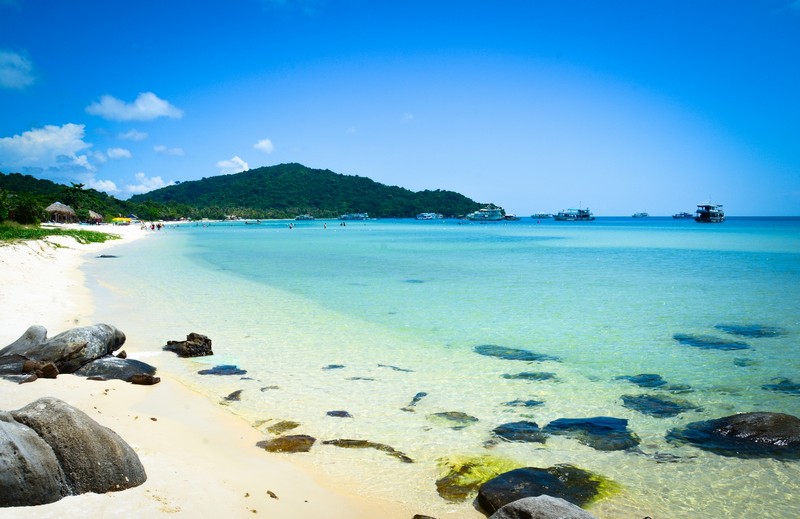
Northwest loop
Starting from Duong Dong town, head up the west coast on nicely paved Cua Can road seven kilometres to reach the quiet sweeping bay of Bai Ong Lang (Ong Lang Beach). There are a couple of magnificent nature-focused resorts. Ong Lang is quiet, relaxed and a pleasant spot to park your bum, and there are several dining options available. The access road is hard to miss; look for the corner with dozens of hotel signs pointing the way.
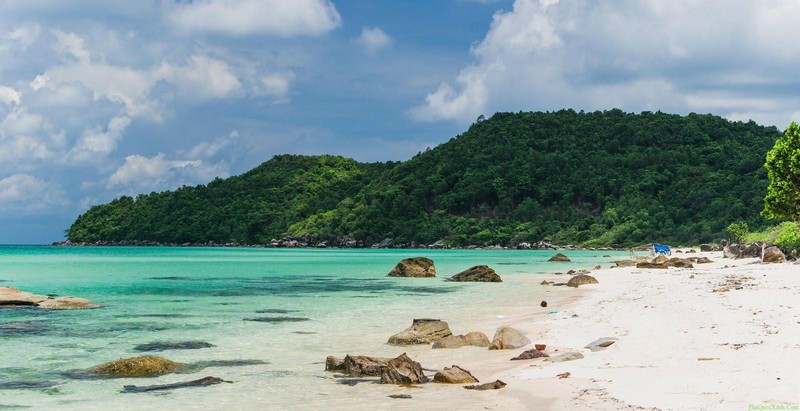
VUNG BAU BEACH
Bai Vung Bau (Vung Bau Beach) is the next one up from Ong Lang. It’s a small cove with only a few properties and it’s a low-key beach ideal for those who want peace. Look for the signs for Bamboo Cottages and Wild Beach Resort and turn left, following the dirt road for two kilometres. Resorts are pretty relaxed and since only a handful of day-trippers make it here, it should be okay to park the bike and walk through the hotel to the water. From the beach you can see Fingernail Island off the coast, which has a good reef for snorkelling.
With warm blue-green waters and a generous stretch of fine yellow sand, Bai Dai Beach is one of the prettiest beaches on the island. One way to easily access Bai Dai is to fork over the 500,000 dong admission to Vinpearl Land. The only other obvious way to reach the beach is by continuing on the dirt road from Vung Bau beach up along the coast. The road is quite challenging, a hilly mix of dirt, loose gravel, rocks and sand. We tried to get to the beach via another dirt road north of the golf course but were stopped by a security guard.
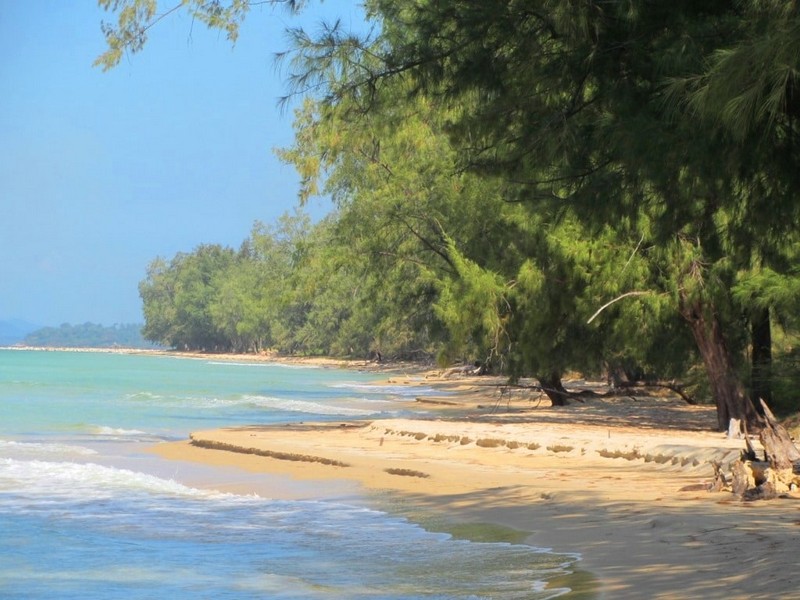
GANH DAU BEACH
Bai Ganh Dau (Ganh Dau Beach) on the northwest corner is a wonderful surprise. The clear turquoise waters sparkle like a jewel as it gently laps onto blonde sand. We spent an hour on a sun-lounger underneath a palm tree without seeing another visitor. There are a couple of seafood restaurants where you can quench your thirst or appetite. This is a fantastic under-the-radar spot.
Prepare your backside for a bumpy ride. Head east for a fun, pretty 19-kilometre journey through the jungle on dirt track. Fourteen kilometres in, it’s possible to stop at Bai Rach Vem which has a fishing village, a shipbuilding yard and rubbish-strewn white sand beach. Look for the small sign “Rach Vem” and turn left. We didn’t get a great feeling here and didn’t linger.
Eventually the dirt road ends and you’ll meet a nicely paved arterial road that runs north-south down the centre. You have a few options from this junction. If time allows, you can take a side trip to the northeast corner to Bai Thom. Unfortunately we didn’t have time to make it but we spoke to a few people who did. The consensus was that the beach was small and mediocre but you could cross a land bridge to tiny Hon Mot island for a look.
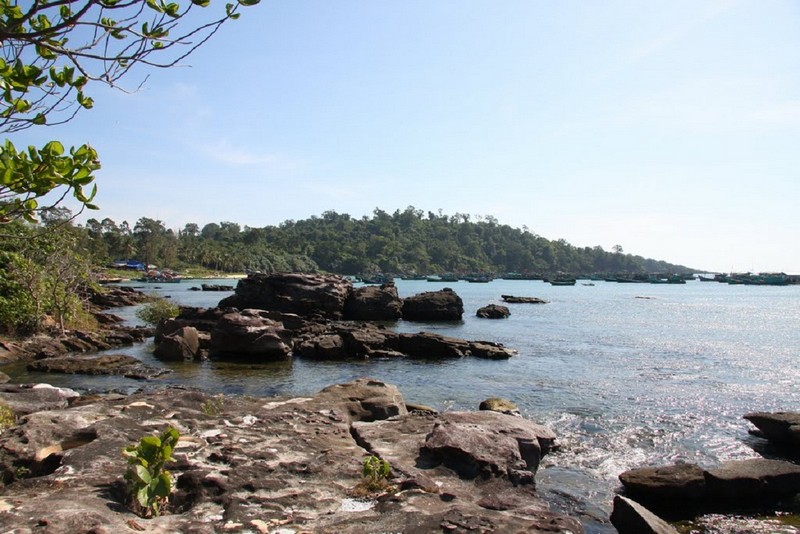
Venturing further, from Bai Thom travel another 12 kilometres west along dirt track to reach remote Bai Rach Tram (Rach Tram beach). And while it may be tempting to continue south from Bai Thom along the east coast, this route is very challenging and only for experienced riders. Otherwise, head back to the junction in the centre.
To head back to Duong Dong, it’s an easy paved journey south on Nguyen Trung Truc, or go west, passing pepper and bee farms to join Cua Can Road.
SOUTHERN ROUTE
There are less notable beaches in the skinny southern tail of the island but you’ll still want to give yourself the whole day. From Duong Dong, take a road leading southeast to Ham Ninh, perhaps stopping for a dip at Suoi Tranh stream along the way (only flowing May to November). At Rach Ham town (which is a great place to eat giant crabs) turn left/head north for seven kilometres to Kiki Coconut Homestay on Cay Sao. The road will give you a taste of what Phu Quoc was like 10 years ago.
You’ll be rewarded with an isolated slice of coast. It’s easy enough to park the bike and follow footpaths to the water. The sand has natural debris but is deserted and pristine. For a meticulously clean patch of sand, Kiki Coconut Homestay is a tranquil breezy place to have a drink, enjoy a splash in the ocean and relax. Their palm-lined beach also has a view of the islands to the east.
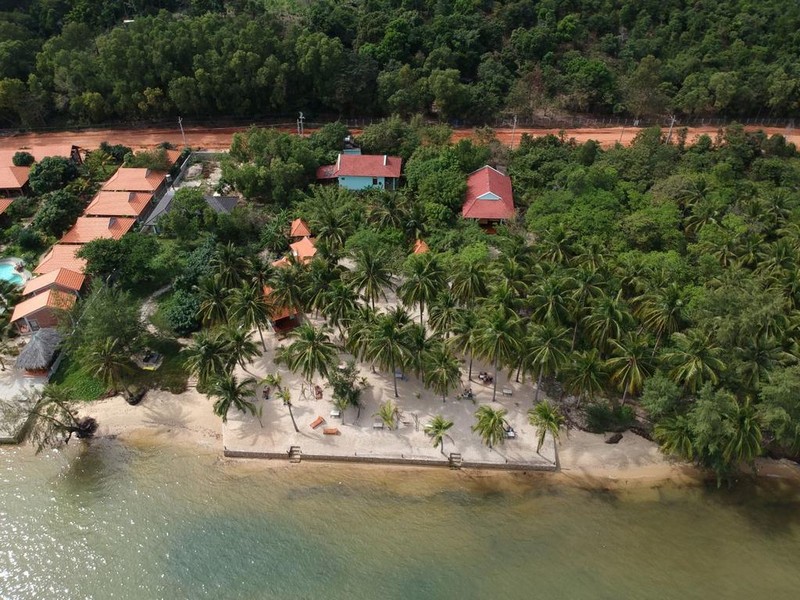
Travel back south and take the sweet, smooth Highway 46 leading straight down the centre to An Thoi at the tip. Along this way is the road to Bai Sao beach. With photogenic white sand and turquoise water, Bai Sao is often considered Phu Quoc’s best beach – but as its popularity continues to increase, so does the rubbish.
For now it has just a handful of places to stay so Bai Sao is a popular spot for day-trippers. From the main road, it’s another two kilometres east on bumpy dirt track. Follow the signs to My Lan Resort to get to The Beach House, a chilled spot to relax and chow on some grub. My Lan itself is a chaotic hive of activity and Vietnamese style feasting. But there’s plenty of coast to escape the crowds and you should allot plenty of time to enjoy.
For now we suggest you give Bai Khem a skip. With white sand and stunning crystal water, Bai Khem has potential and a developer certainly saw it. But at the moment the beach is heaped with rubbish and a small fishing village is clinging on to existence. It remains to be seen what will happen once the resort opens. No doubt the beach will be cleaned, the road paved and we’ll hazard a guess that the village will be moved. If you want to take a look, it’s south of Bai Sao. From Highway 46, head east on the first lane south of the prison (now a tourist site).
If you’ve got time and want a scenic view, then head back up Highway 46. At Phu Son Ha Noi Resort, turn right and follow the road for about three kilometres to Ho Quoc Pagoda which gives you a pretty view to the water. You can also climb down the hill for a final dip on an unspoilt beach.
Travelfish | Wanderlust Tips | Cinet

